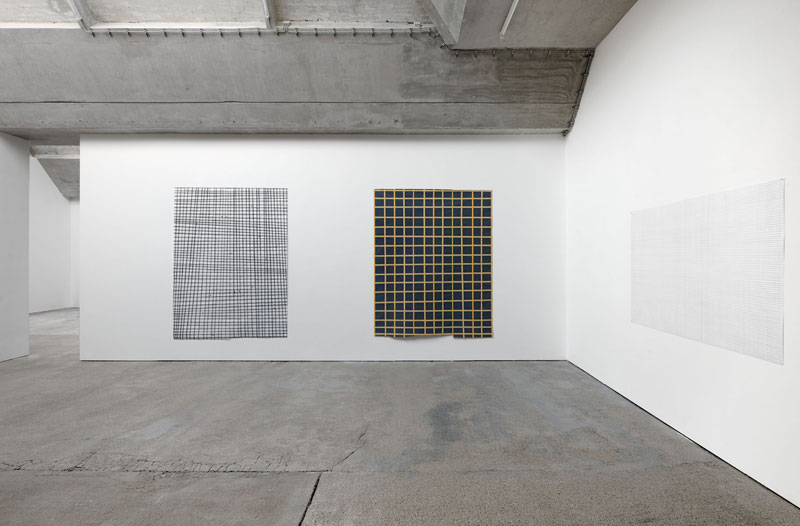Alex Hanimann
September 1 – October 20, 2012
When this year’s Documenta director Carolyn Christov-Bakargiev takes a closer look at the anthropocentric worldview, she touches on a theme that Swiss artist Alex Hanimann (*1955) has long explored. Hengesbach Gallery opens a solo exhibition on August 31, 2012, and will present the video work Shifting (2004) alongside newly created large-scale drawings until October 20, 2012.
In the video Shifting, we follow a leashed pit bull through a nighttime street in Paris. The fighting dog, outfitted with a muzzle, is initially provoked by his nocturnal follower—a camera. The animal feels threatened and reacts aggressively. Its ghostly glowing eyes come alarmingly close. But since baring teeth, growling, and barking have no effect, the dog’s aggression gradually turns into confusion. The camera, drawing ever closer, paralyzes and intimidates the animal. It moves forward hesitantly. The man repeatedly has to pull it along by the leash. Eventually, he picks up the dog and carries it like a vulnerable child across the street and home.
The video exemplifies how a kind of communication slowly develops between human and animal—or between the camera eye and the dog—and how moods shift, emotions change, and behavior patterns are influenced. Alex Hanimann constructs experimental setups in the spirit of a researcher: “The foundation of my work can certainly be understood as documentary. But I’m actually interested in the stereotypical.”
Hanimann examines fragments of reality using semiotic tools. Certain appearances, states, and actions are spotlighted using various media, and through manipulation, isolation, and transformation, their underlying mechanisms and prototypical forms are uncovered. His work questions how knowledge comes into being—knowledge that is necessarily tied to defined concepts. And it inevitably raises the question of how capable we are of correcting certain beliefs or revising prejudices. Don’t we take so much for granted? Don’t words and terms that we have once defined massively influence our thinking and perception, leading us to treat them as something fixed and reliable?
Hanimann probes this ambivalence between the security provided by pre-established patterns and the constraint and determinism they also impose. The grid structures that repeatedly appear in his work become symbolic visualizations of these systemic entanglements. Machine-generated grids are juxtaposed with hand-drawn grids, whose lines diverge, converge, repel each other, and reveal their own laws. In doing so, Hanimann turns the concept of a pattern standard on its head, demonstrating how systems can be subjectively bound—truth, he suggests, is a matter of perspective and relation.
Installation Views


